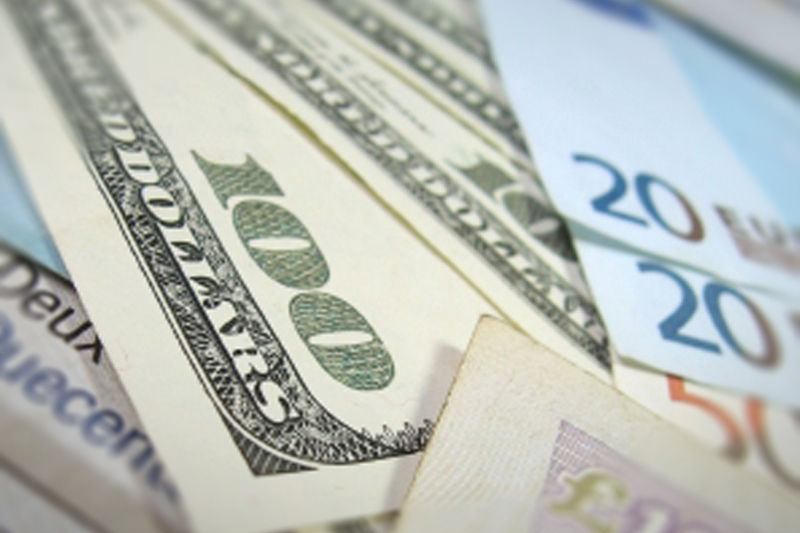Investing.com -- EUR/USD surged to fresh five-month highs on Tuesday, before paring some gains amid renewed concerns on the widespread ramifications that could ensue from the United Kingdom's potential departure from the European Union.
The currency pair traded in a broad range between 1.1347 and 1.1465 before settling at 1.1384, down 0.0026 or 0.23% on the session. Despite the slight sell-off, the euro has still jumped approximately 2% over the last two weeks since Federal Reserve chair Janet Yellen sent dovish indications that the U.S. central bank will remain cautious with future interest rate hikes in the near term. More broadly, the euro has gained nearly 5% against its American counterpart since the start of the year.
EUR/USD likely gained support at 1.0538, the low from December 3 and was met with resistance at 1.1496, the high from Oct. 15.
While lowering its global growth outlook for 2016 on Tuesday, the International Monetary Fund sent additional warnings on the "severe regional" and "global damage," the U.K. could create if voters approve a public referendum to leave the EU on June 23. In its latest Short Term Economic Outlook (STEO), the IMF said a so-called "Brexit" could curtail traditional trade relationships throughout the euro zone, weighing on investor confidence and increasing financial market volatility. Last month, German chancellor told a rally that the strength of the euro "relies on the free movement of goods and services."
Meanwhile, the IMF cut its worldwide economic growth forecast for 2016 to 3.2%, citing persistently low oil prices, a continued slowdown in the Chinese economy and weakness in advanced and emerging markets. In advanced economies in particular, the IMF expects modest growth of 2% on the year, amid weak demand, unfavorable demographics and low productivity. In January, the IMF predicted global growth of 3.4% for the year as a whole.
"Lower growth means less room for error," said Maurice Obstfeld, IMF Economic Counsellor and Director of Research Maurice Obstfeld said in a statement. "Persistent slow growth has scarring effects that themselves reduce potential output and with it, demand and investment."
As central banks worldwide continue to rely on negative interest rate policies (NIRPs) in an effort to stave off the threat of deflation, Obstfeld emphasized that major economies cannot solely rely on monetary policy alone to achieve their stated growth targets. Instead, Obstfeld noted that the nations must implement a more potent policy mix, combining revamped structural, fiscal and monetary policies.
"If national policymakers were to clearly recognize the risks they jointly face and act together to prepare for them, the positive effects on global confidence could be substantial," Obstfeld said.
Elsewhere, Federal Reserve Bank of Dallas president Rob Kaplan reiterated that the Fed should remain data-dependent with the timing of its next interest rate hike, while adding that the U.S. central bank should consider raising rates in June if the economy continues to improve. Last month, the Federal Open Market Committee (FOMC) held its benchmark Federal Funds Rate unchanged at a level between 0.25 and 0.50%.
"We're trying to get ourselves to a normal level of rates because there's a cost to excessive accommodation," Kaplan told CNBC. "It hurts savers and creates distortions in asset allocation. I think we're going to have to take account of all the data including what currencies are doing and what's going on around the world. We'll try to move patiently but do it in a thoughtful way."
Kaplan's comments were followed by hawkish remarks from San Francisco Fed president John Williams, who said on Tuesday that he anticipates to two to three rate hikes from the FOMC this year if the economy continues to remain strong.
Any rate hikes by the Fed this year are viewed as bullish for the dollar, as foreign investors pile into the greenback to capitalize on higher yields.
The U.S. Dollar Index, which measures the strength of the greenback versus a basket of six other major currencies, gained more than 0.15% to an intraday high of 94.37, before settling slightly lower at 94.05. On Monday, the index dipped below 94 to hit an eight-month low.
